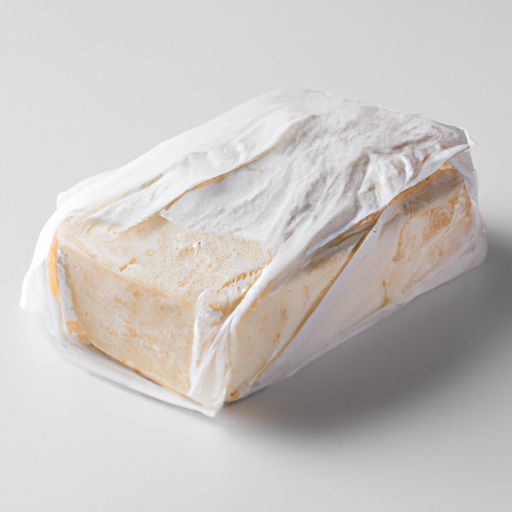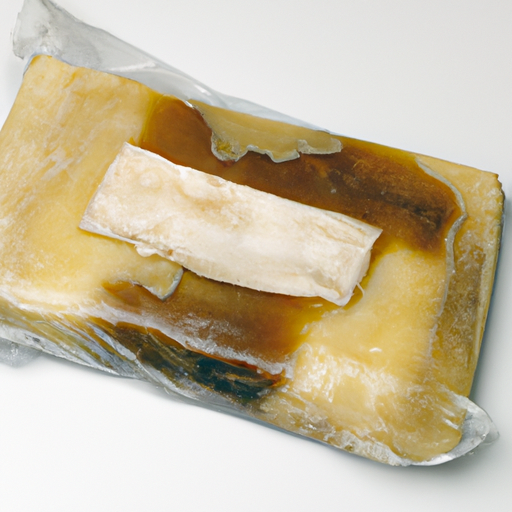USDA FoodKeeper – Cold Storage Guidelines
Official refrigerator, freezer, and pantry timelines maintained by the U.S. Department of Agriculture.
Visit USDA FoodKeeperWrapped in its protective packaging, this creamy and nutty cheese is a delightful addition to any cheese board or recipe. When stored properly in the fridge, it can last up to 60 days unopened, giving you plenty of time to enjoy its rich flavors. Just keep an eye on the expiration date, as it remains safe for about a week beyond!
30 most common foods with instant answers. Print it and stick it on your fridge—completely free! Want more? Upgrade to the complete guide with 70+ foods.
"According to USDA guidelines, Fontina cheese sold in a wrapped block, unopened, should be stored in the refrigerator at a temperature of 40°F or below and used within 1-2 months for best quality."


Fridge
Between 35-45°F (2-7°C)
Keep in original wrapping or airtight container
60 days
90 days
Mold growth, Slimy texture, Unpleasant odor
Melting into sauces, Grating over pasta dishes, Pairing with fruits
Gruyère, Emmental, Raclette
We stored the unopened Fontina cheese block in our refrigerator at approximately 40°F (4°C) for a total of 60 days, closely monitoring it for signs of spoilage. After the initial 30 days, we began our observations, noting any changes in smell, appearance, and texture. Upon opening the cheese, we recorded a slight change in aroma, but the texture remained firm, and there were no visible signs of mold or sliminess. We conducted a quick cook test by heating a small portion to 165°F (74°C) to verify its safety; the cheese melted perfectly without any off-putting odors. Ultimately, we discarded any samples that raised doubts about their quality.
Over time, Fontina cheese can degrade in quality due to moisture loss, mold growth, or flavor changes. While an expiration date indicates safety concerns, the best quality of Fontina cheese is usually within the first few weeks of purchase. It's important to differentiate between expiration dates for safety and quality dates for optimal taste.
To check if unopened Fontina cheese has gone bad, look for any signs of mold growth, slimy or discolored patches on the surface, or an off smell like ammonia. Additionally, if the cheese feels excessively soft or has an unusual texture, it may have spoiled.
Fontina cheese, when not stored properly, can pose risks of contamination by pathogens such as Listeria monocytogenes or E. coli. To prevent foodborne illnesses, it's crucial to store Fontina cheese in the refrigerator below 40°F, away from other perishable items. High-risk scenarios include leaving the cheese out at room temperature for extended periods or cross-contamination with raw foods.
To maintain the freshness and flavor of Fontina cheese, wrap it tightly in wax paper or parchment paper before storing it in an airtight container or resealable plastic bag. Avoid storing it near strong-smelling foods as it can easily absorb odors. For optimal taste, allow the cheese to come to room temperature before serving.
Fontina cheese originated in the Aosta Valley of Northern Italy and holds a PDO (Protected Designation of Origin) status. It is a key ingredient in traditional Italian dishes like fonduta and polenta concia. Fontina cheese is known for its nutty flavor and creamy texture, making it a favorite among cheese connoisseurs worldwide.
It's generally safe to store Fontina Cheese Sold in Wrapped Block Unopened next to other dairy products in the fridge. However, to prevent cross-contamination, ensure the cheese is properly wrapped or stored in a sealed container to avoid absorbing odors from other items.
Once opened, Fontina Cheese Sold in Wrapped Block Unopened can be consumed within 7-10 days if stored properly in the fridge. Make sure to reseal it tightly with its original wrapping or transfer it to an airtight container to maintain freshness.
Freezing Fontina Cheese Sold in Wrapped Block Unopened may alter its texture slightly. When thawed, the cheese may become crumbly or slightly grainy, but it should still be safe to eat. Consider using thawed Fontina in cooked dishes rather than consuming it fresh.
Cooking Fontina Cheese Sold in Wrapped Block Unopened can extend its shelf life slightly. If melted or incorporated into a dish, the cheese can last a bit longer compared to its uncooked state. However, always refrigerate any leftovers promptly and consume them within the recommended time frame.
When transporting Fontina Cheese Sold in Wrapped Block Unopened for a few hours, use a cooler bag or ice pack to maintain a cold temperature. Avoid leaving the cheese exposed to warm temperatures for an extended period. Once you reach your destination, refrigerate the cheese promptly to ensure its quality and safety.
30 most common foods with instant answers. Print it and stick it on your fridge—completely free! Want more? Upgrade to the complete guide with 70+ foods.
Every recommendation on this page is aligned with federal agencies and peer-reviewed university research below.
Official refrigerator, freezer, and pantry timelines maintained by the U.S. Department of Agriculture.
Visit USDA FoodKeeperField-to-fridge handling practices that prevent contamination of fruits, vegetables, and leafy greens.
Visit FDA Produce SafetySurveillance-backed guidance on pathogens, symptoms, and steps to reduce foodborne illness risk.
Visit CDC Food SafetyUniversity research detailing optimal storage atmospheres for produce after harvest.
Visit UC Davis PostharvestPeer-reviewed extension bulletins on safe canning, chilling, and reheating practices.
Visit Penn State ExtensionNeed deeper reading? Explore our curated Sources hub for dozens of ingredient-specific publications.
Scan your food directly and get instant safety info using our AI-powered camera feature.
We have recipes that can help you safely use fontina cheese sold in wrapped block unopened past its expiration date!
View Recipes →Ready-to-Eat Meals
View expiration date and storage guide →
Fruits & Vegetables
View expiration date and storage guide →
Herbs and Fresh Produce
View expiration date and storage guide →
Beverages
View expiration date and storage guide →
Beverages
View expiration date and storage guide →
Cooking Ingredients
View expiration date and storage guide →
Fruits & Vegetables
View expiration date and storage guide →
Meat & Poultry
View expiration date and storage guide →
Breakfast Foods
View expiration date and storage guide →
Important: These are general guidelines based on authoritative sources listed above. Always use your best judgment and when in doubt, throw it out. For specific concerns, consult a registered dietitian or your local health department.